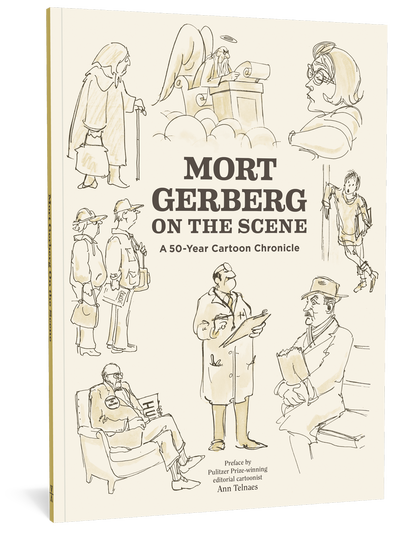56 Years Ago this Week In The New Yorker
Regular visitors to the Spill know that I’ve made a habit of pulling bound volumes of “vintage” New Yorkers off the shelf, flipping through and reporting on some of the things that jump out. Here’s a quick tour of the issue of November 25, 1967. Above is a splendid drawing by the late and equally splendid Henry Martin. Here’s Henry’s A-Z entry:


Henry Martin ( Pictured above. Photograph taken 1984) Born 1925, Louisville, Kentucky. Died, June 30, 2020, Newtown, Pennsylvania. New Yorker work: 1964 – 1999 . Collections: Good News / Bad News ( Scribners, 1977), Yak! Yak! Yak! Blah! Blah! Blah! (Scribners, 1977). Martin has illustrated a number of books, as well as writing and illustrating children’s books. Ink Spill’s Henry Martin Appreciation.
The issue’s cover was provided by another terrific artist, the uber-prolific James Stevenson:
Mr. Stevenson’s A-Z entry:

James Stevenson Born, NYC, 1929. Died, February 17, 2017, Cos Cob, Connecticut. New Yorker work: March 10, 1956 – June 16, 2003. Stevenson interned as an office boy at The New Yorker in the mid 1940s when he began supplying ideas for other New Yorker artists. Nine years later he was hired as a full-time ideaman, given an office at the magazine and instructed not to tell anyone what he did. He eventually began publishing his own cartoons and covers as well as a ground-breaking Talk of the Town pieces (ground breaking in that the pieces were illustrated). His contributions to the magazine number over 2000. Key collections: Sorry Lady — This Beach is Private! ( MacMillan, 1963), Let’s Boogie ( Dodd, Mead, 1978). Stevenson was a children’s book author, with roughly one hundred titles to his credit. He was a frequent contributor to the Op-Ed page of The New York Times, under the heading Lost and Found New York. Stevenson’s The Life, Loves and Laughs of Frank Modell, published in 2013, is essential reading. Sally Williams’ 2019 documentary film, Stevenson Lost & Found is essential viewing.
The issue’s cartoonists are the last bridge of the Harold Ross era before the truly modern era of cartoonists arrive in the mid 1970s (the Ross artists include Chon Day, Frank Modell, Alan Dunn, Mischa Richter, Dana Fradon, George Price, Otto Soglow, and Peter Arno). Although Edward Koren, with his groundbreaking “beasts” was already on the scene in ’67 (his 5th year at The New Yorker), Charles Barsotti, Sam Gross, and George Booth had yet to arrive. And we were still seven years away from the arrival of Jack Ziegler’s wacky work and world.
In this issue you’ll find a full page cartoon by Peter Arno, as well as Otto Soglow drawings featured, as usual, in The Talk Of The Town. Also appearing: a cartoon by Alan Dunn, at the time the most prolific of all the magazine’s cartoonists (Mr. Dunn’s first New Yorker drawing appeared in 1926). Rounding out the cartoonists are the crowd I associate more with the later James Geraghty/William Shawn era: Warren Miller, Lee Lorenz, Donald Reilly, Robert Censoni, and Charles E. Martin. A cartoon by Ronald Searle is also in the issue. Mr. Searle was, at that time, a relative newcomer to The New Yorker; the November 25th ’67 cartoon was just his 11th in the magazine.
I don’t always discover something “new” while browsing through ancient New Yorkers, but today I came across an ad for a Mischa Richter kids books I’d never heard of (I’m showing you the actual cover, above right).
I’ll leave you with this great Abe Birnbaum spot drawing. Mr. Birnbaum’s work, whether it’s cover art or spots is among my favorite New Yorker art. I love how, in this very small drawing, he’s given us another “fleeting moment.” * Also of note: someone thought enough of this particular page to put a protective piece of tape over a very small tear in the page. You have to love librarians.
*William Steig, said of New Yorker covers: “For me, a cover is a moment of Haiku — a special moment fleetingly observed.” I think “fleeting moment’ can also apply to the magazine’s other art.
______________________________________________________________________
 Linda H. Davis On Mort Gerberg
Linda H. Davis On Mort Gerberg
Here’s a piece of interest, by Charles Addams’s biographer, Linda Davis, about The New Yorker‘s longest active artist, Mort Gerberg. Link here. The article, “About Mort Gerberg,” can be found on page 22.
If you haven’t already read Ms. Davis’s Charles Addams: A Cartoonist’s Life, what are you waiting for?






